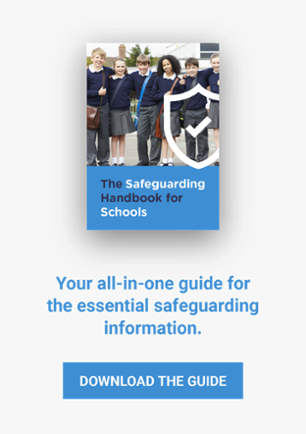5 Steps to Effective Safeguarding
Taking a whole-school approach to embedding safeguarding protocols throughout your school's structure and processes will help to ensure that all pupils are protected against maltreatment and harm.
It’s vitally important to create and maintain effective safeguarding policies. Below are five steps to go through when ensuring you have effective safeguarding policies in place:
- Create a Safeguarding Policy
- Staff Training and Management
- Computer Network Safety
- Implement Safeguarding Protocols for Clients and Volunteers
- Review the Safeguarding Policy
1. Create a Safeguarding Policy
Every school, care or education provider should have a comprehensive safeguarding policy in place. This policy should be built into any staff or volunteer induction and in any partnership with external organisations.
This policy is in place to protect vulnerable children who are either suffering or have the potential to suffer from physical or mental abuse.
An effective safeguarding policy must include the following:
- Statement of intent i.e. aims and purposes.
- Contact details for local agencies and other external partners.
- Equality statement.
- A detailed list of potential risks both on and off-site.
- Links to or copies of relevant governmental legislation.
Furthermore, a safeguarding policy helps in a number of key areas, such as:
- Respecting the rights of children.
- Treating child welfare as of paramount importance.
- Developing improved internal and external links and relationships with carers, parents and other involved parties.
- Ensuring the needs of children are both listened to and met.
- Promoting and maintaining a good level of safeguarding knowledge amongst all your staff.
- Universal knowledge and acceptance of safeguarding as both a legal and moral responsibility from the point of view of staff.
2. Ensure Staff Training and Management
Ensuring that all your staff or colleagues have sufficient, up-to-date training is crucial. They all need to have the relevant education and certificates to prove they can provide the right care and protection. Any member of staff should have, at minimum, an introductory level of safeguarding training, known as Level 1 Safeguarding Training. However, teachers need training in two other essential areas - the Prevent Duty and Online Safety.
Additionally, this training can be built upon and maintained by regular refresher courses. For ease, you can use spreadsheet software to keep track of your staff’s certifications and whether they’re up-to-date.
Safeguarding certificates typically expire after two years which may cause marks to be deducted on Ofsted inspections. More importantly, if any knowledge is incomplete or out-of-date, vulnerable parties may be more at risk.
Training courses can be easy to find and attend. For example, we offer a range of safeguarding events and courses you or your staff can use to expand upon their knowledge.
3. Establish and Maintain Computer Network Safety
While the internet is useful for operations and education, it’s, of course, also full of incredibly harmful content. Content such as this could have a direct negative influence over a child or trigger psychological and emotional responses to previous trauma.
Within your school or college, you need to ensure that you’ve established internet filters and set them so they block any potentially dangerous or lewd content.
This includes any use of social media and public forums. All staff should be briefed on what’s an acceptable use of an education provider's internet and impose strict rules on how it should be treated.
4. Implement Safeguarding Protocols for Parents and External Partners
Any volunteer, client, parent or external partner should be made aware of any effective safeguarding policy. Steps should be undertaken so that all parties involved are well informed about what to do if any safeguarding concern is raised. It will also teach them to identify any inappropriate behaviour enacted by any fellow staff or volunteers.
Some best practices for making your safeguarding policy universally-available for involved parties is by sending out email bulletins, providing physical information for staff and by using signage.
Your safeguarding policy should also be visible to the public. Include it on your organisation’s website.
5. Review the Safeguarding Policy
A safeguarding policy is never finished. As new circumstances, reports and laws are created and developed, your safeguarding policy should reflect these changes. Make sure to review it at least every two years.
The following are guidelines for making sure you maintain an effective safeguarding policy upon review:
- Create and update a code of conduct. Make sure that all staff and volunteers sign it.
- Ensure you develop a whistleblowing policy to add to your safeguarding policy..
- In terms of internet safety, draft an acceptable use clause to determine what is and what isn’t allowed when it comes to surfing the web. This can be expanded upon to include technology like cameras.
- Ensure safeguarding protocol is present within the recruitment and training process.
- Review and update any and all child protection policy and procedures. They should be easy to understand and follow, being concise about the steps a staff member should take upon a disclosure from a child or young person.
- Include relevant contact information for local children's authorities, protection services and your designated safeguarding lead.
- Include an equality and diversity statement, making sure that it prohibits any discrimination, targeted harassment or bullying based on ethnicity, gender, age, ability, religion or sexual orientation.
While updating your policies are effective, you’ll need detailed information about what exactly has been updated and why to distribute amongst your staff.
Download the Safeguarding Handbook
Our dedicated handbook is free to use and covers the in-depth knowledge surrounding safeguarding policy. It explores safeguarding in action, the legalities and responsibilities of a safeguarding provider, disclosure techniques and much more.
Click the link below to download.




